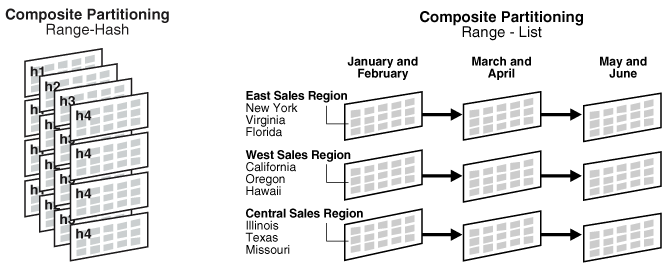Composite Partitioning
Composite partitioning is a combination of the basic data distribution methods; a table is partitioned by one data distribution method and then each partition is further subdivided into subpartitions using a second data distribution method. All subpartitions for a given partition represent a logical subset of the data.
Composite partitioning supports historical operations, such as adding new range partitions, but also provides higher degrees of potential partition pruning and finer granularity of data placement through subpartitioning. Figure 2-3 offers a graphical view of range-hash and range-list composite partitioning, as an example.
Figure 2-3 Composite Range—List Partitioning

Description of "Figure 2-3 Composite Range—List Partitioning"
The types of composite partitioning are:
Composite Range-Range Partitioning
Composite Range-Hash Partitioning
Composite range-hash partitioning partitions data using the range method, and within each partition, subpartitions it using the hash method. Composite range-hash partitioning provides the improved manageability of range partitioning and the data placement, striping, and parallelism advantages of hash partitioning.